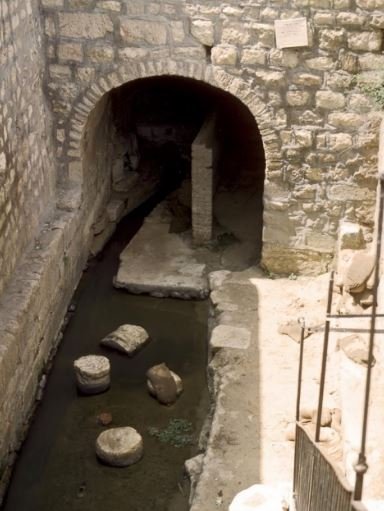The Pool of Siloam: A Rediscovered Testament to Faith and History

In a groundbreaking discovery that intertwines faith, history, and archaeology, the Pool of Siloam, located in Jerusalem, has emerged from centuries of obscurity to reclaim its place in the annals of biblical significance. First rediscovered in 2004 during infrastructure work, this ancient site has captivated believers and historians alike as the location where Jesus healed a man born blind, as recorded in John 9:1–11.

The uncovering of stone steps, water channels, and a layout consistent with first-century Jerusalem has provided a compelling link between the biblical narrative and tangible history. These features align seamlessly with the Gospel’s description, offering a vivid glimpse into the setting of one of Jesus’ most profound miracles.
A Historical Tapestry Woven Through Time
The Pool of Siloam’s origins date back to the 8th century BCE during the reign of King Hezekiah. Amid the looming threat of an Assyrian siege, Hezekiah undertook monumental efforts to secure Jerusalem’s water supply. As detailed in 2 Kings 20:20 and 2 Chronicles 32:30, the pool was part of an intricate system connected to the Gihon Spring, ensuring the city’s survival during turbulent times. Over centuries, the pool evolved, expanding during the Second Temple period to become a significant gathering site for Jewish pilgrims seeking ritual purification before ascending to the temple.
The ancient Jewish historian Josephus also references the Pool of Siloam, emphasizing its importance as a site of cleansing and community life. His accounts further corroborate the archaeological findings, cementing the pool’s identity as a cornerstone of Jerusalem’s spiritual and social landscape.
Biblical Significance Brought to Life
The Pool of Siloam holds a revered place in Christian tradition, most notably as the backdrop for one of Jesus’ miracles. In John 9:1–11, Jesus heals a man blind from birth, instructing him to wash in the pool. The rediscovery of this site has breathed new life into this story, offering a tangible connection to the events described in Scripture. For many, standing at the edge of the uncovered stone steps evokes a profound sense of walking where the divine met the earthly.
A Testament to Archaeological Precision
The pool’s location near the ancient City of David and its direct link to the Gihon Spring were pivotal in confirming its identity. Excavations revealed features unmistakably tied to the first-century period, such as the tiered stone steps leading into the water, which would have accommodated pilgrims. These findings not only validate the Gospel accounts but also provide insights into the daily lives of Jerusalem’s ancient inhabitants.
Faith Meets Fact
The rediscovery of the Pool of Siloam is more than an archaeological triumph; it’s a profound intersection of faith and evidence. The combination of historical texts, including those by Josephus, and meticulous excavations underscores its authenticity as the site of Jesus’ miracle. For believers, it affirms the timeless truth of Scripture. For historians, it offers a rare glimpse into the physical and cultural fabric of ancient Jerusalem.
A Modern Pilgrimage
Today, the Pool of Siloam has become a destination for pilgrims and tourists worldwide, drawing those seeking a deeper connection to biblical history. Its rediscovery has reignited interest in Jerusalem’s rich past, serving as a bridge between the ancient and the modern, the spiritual and the scientific.
As more layers of Jerusalem’s history are unearthed, the Pool of Siloam stands as a powerful reminder of the enduring legacy of faith and the miracles that continue to inspire generations. Its story, etched in both Scripture and stone, invites us all to reflect on the profound intersections of the divine and the earthly.




